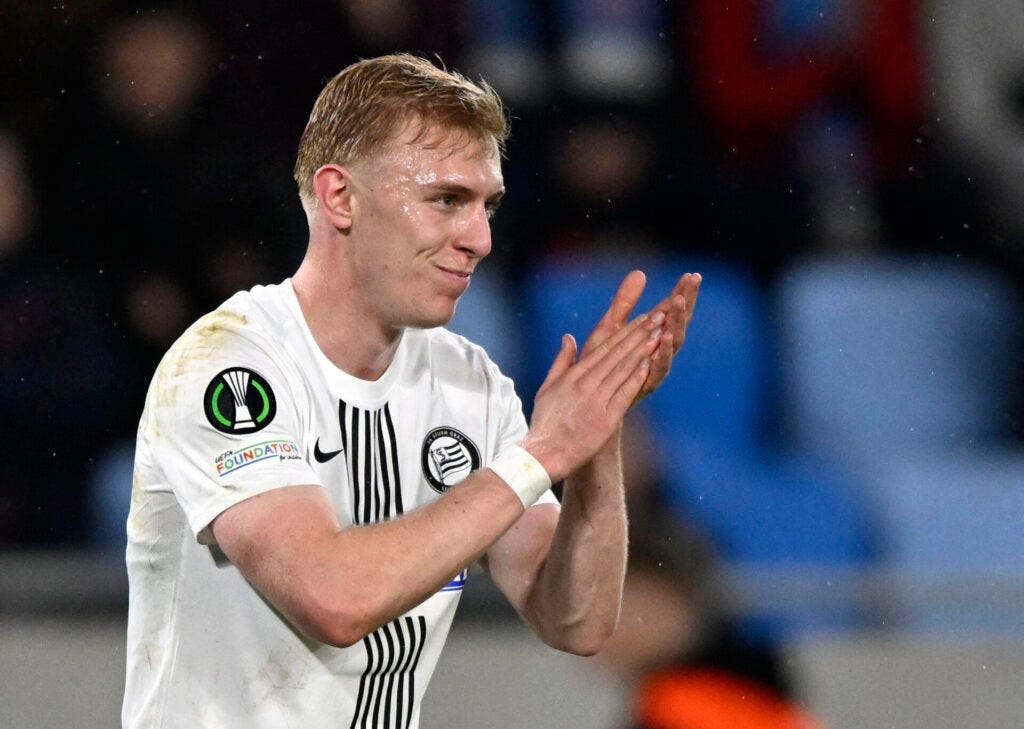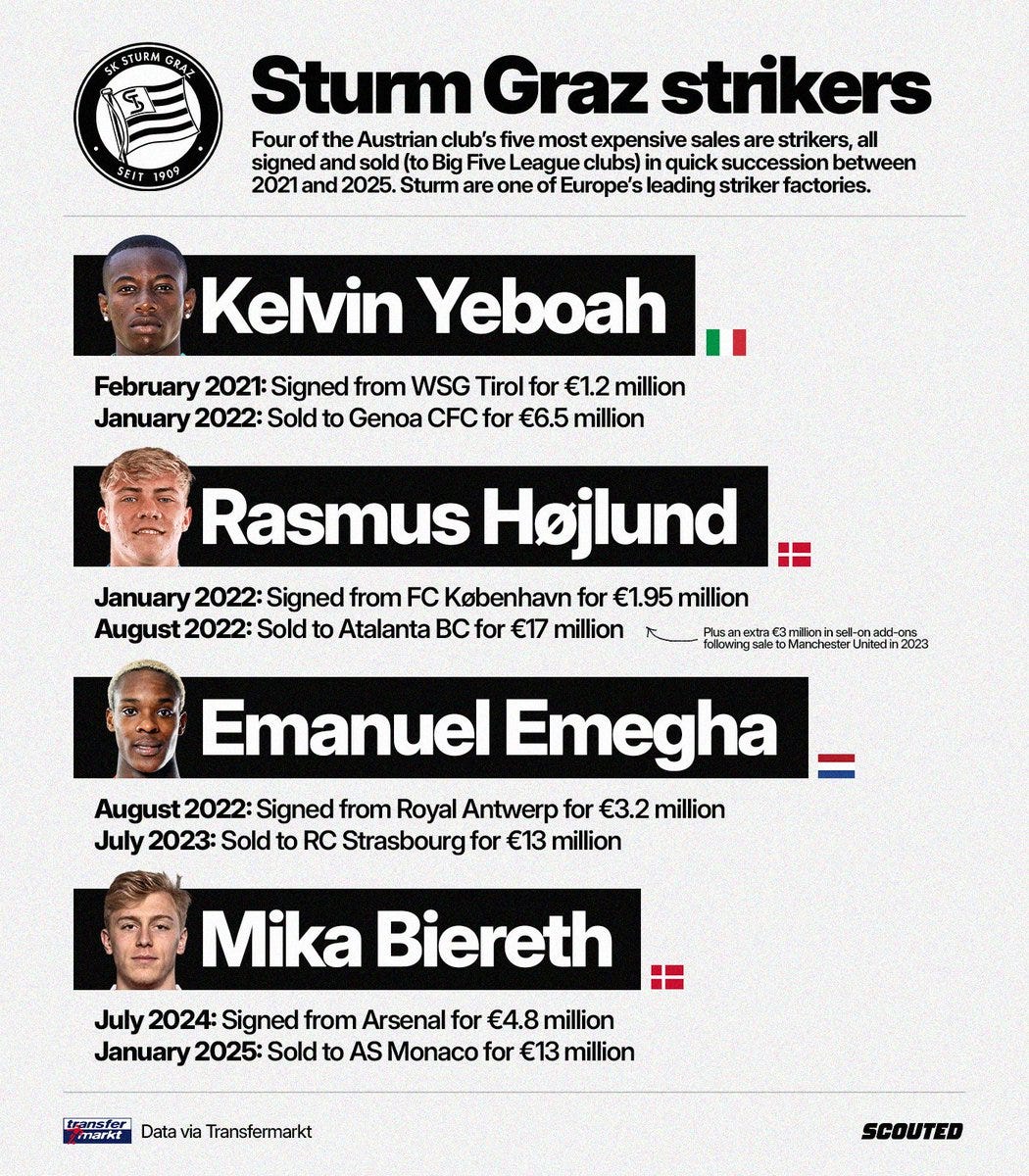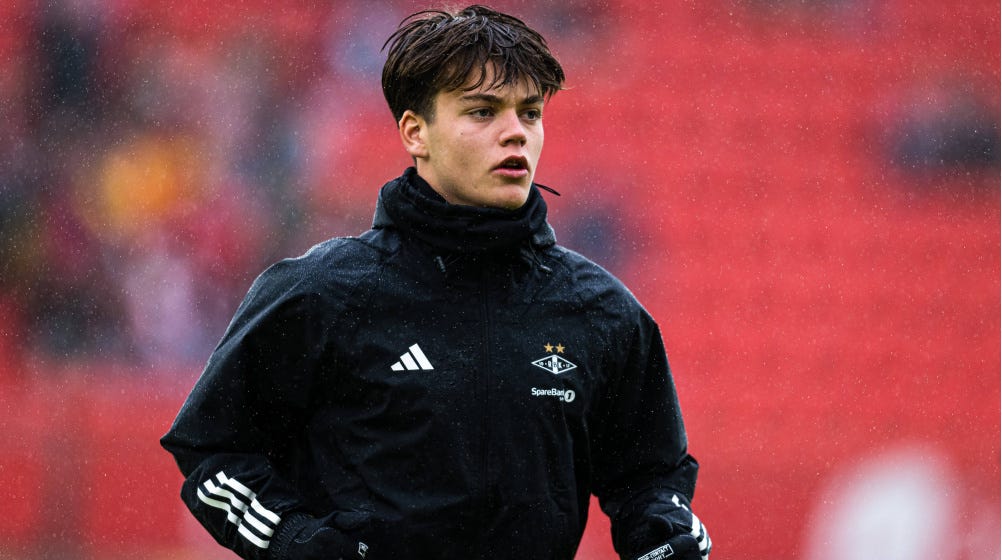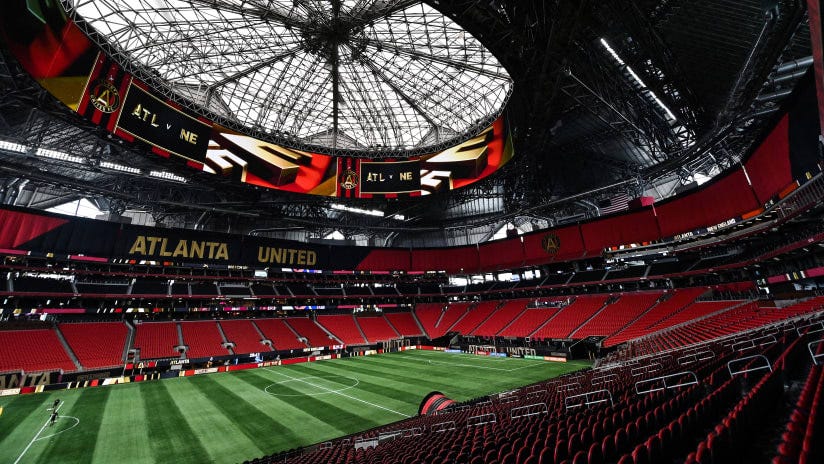Daryl's Notebook: The Transfers (2025 January edition - Part 2)
There are movements happening across the world. And there have been a lot of movements that caught my attention.
In part 1 of this two-part series, I looked at what is currently happening for most English clubs in the 2025 January window and identified some interesting trends that clubs have been demonstrating. What I concluded were that most clubs are looking into signing more young players as long-term investments for them, headlining by Manchester City’s rebuild in this very window, and lower league teams are getting smarter with their transfers by approaching undervalued markets for talents that English clubs would have ignored or missed a few years ago.
Let us take things beyond the borders of England and look towards the rest of the world, where there are also a lot of interesting movements happening across almost all continents. Obviously I cannot cover all of the topics in just one edition like this because it will be thousands of words long, so I have picked four of the most interesting topics to me to give my thoughts about, along with diving a bit deeper into those topics!
How to develop your strikers
One of the most interesting transfers this January window that might have flew under the radar is Mika Biereth’s move from Austrian side Sturm Graz to Ligue 1 powerhouse AS Monaco for a reported total package of 15 million Euros.
The English-Danish striker had developed drastically after leaving Arsenal’s academy in search for first team football in Austria, and he became a key player for Christian Ilzer’s Sturm Graz straight away and gave the club a reason to turn his January 2024 loan move into a permanent one just six months later. It was also partially because he contributed to Sturm Graz’s double-winning season in Austria and dethroned the ever-dominant Red Bull Salzburg to both the Premiership and the Cup. Biereth did not slow down once the new season rolled around and even took things to a new level by scoring 14 goals in 25 matches across all competitions, which includes two goals in the Champions League league phase. He is still only 21 years old, by the way.
The interesting thing, though, is that Biereth was not the first striker that Sturm Graz had successfully developed and then turned profit for the club. As pointed out by ScoutedFtbl here, the Austrian club already has a track record of developing young strikers in quick succession, then sell them on to bigger clubs for a larger sum of money. The most obvious example on this list is Rasmus Højlund, who took off after joining from FC København and then never looked back. Sturm Graz also has something that attracts Danish talents as well, Højlund joined them directly from the Danish Superliga, Biereth is half Danish and half English, and they are still developing William Bøving who also joined from FC København along with Tochi Chukwuani, an FC Nordsjælland academy graduate.
It did not seem like Sturm Graz panicked in finding a replacement for their top goal-scorer this season either, as they once again looked towards England and loaned in Fally Mayulu from Bristol City until the end of the season. Mayulu feels like a safe option for Sturm Graz since he is still quite young (only 22 years old) and knows Austria well through his time at Rapid Wien and Blau-Weiss Linz, so he will not take very long to adapt to his new club after he strugged to score goals in the EFL Championship for Bristol City. They did also give Erencan Yardımcı a try, but he struggled to make an impact during the first half of the season and has since been recalled back to Hoffenheim to play for…Christian Ilzer.
There is a saying that goes “buying a striker always cost more than developing a striker”. That still remains very true, because a striker tends to be judged on their goal-scoring ability and their market value also reflects that. If a striker scores more goals for a club, that club will have the leverage to demand a large sum of money for that striker. But what Sturm Graz and Eintracht Frankfurt have been doing in the last few years slowly challenges that belief, because a club can do due diligence with their recruitment and scouting to find an undervalued striker, then give them a platform to be their best, and then sell them for a profit.
I have highlighted Omar Marmoush in part 1, who only looked like a decent Bundesliga player for Wolfsburg, until Frankfurt gave him an opportunity and turned him into one of the most lethal goal-scorer in the league. Frankfurt also has a track record for themselves, with names like Sébastian Haller, Luka Jović, Ante Rebić, André Silva, Randal Kolo Muani, or Marmoush’s partner-in-crime this season Hugo Ekitiké that they can look back on. Obviously Frankfurt are playing in a more attractive league and have more resources to work with, but the German club bought most of these names either for a very low fee or even on a free like Kolo Muani from FC Nantes. All of the mentioned players, except for Ekitiké, had been sold by Frankfurt to various big teams across Europe for a large sum of money, giving them a platform to repeat the same process.
With a reported 75 million Euros retrieved for Marmoush, Frankfurt went out and bought Elye Wahi from Marseille for a reported 20 million Euros, which means the club are keeping a profit of around 20-30 million Euros for themselves (accounting for Wahi’s wage as well). I am aware of Wahi’s controversies off the pitch so I will not hold him up very high, but if I only judge him as a player, this is still a good piece of business for Frankfurt. Wahi has shown his potential at Montpellier and became a good goal-scorer in Ligue 1, but while he made the right choice to turn down Chelsea and remained in France with Lens and Marseille, he struggled to replicate his form at both clubs even though they all had to pay above 25 million Euros for his service. If Frankfurt can bring back his top form at Montpellier, Wahi will continue that long list of impressive strikers that Frankfurt developed and sold for profit.
The moral of the story here is that: if you can identify an underperforming striker, why that striker is underperforming (even for both men’s and women’s football), and give them an environment where they can thrive and not have to worry about the factors that made them underperformed, then there is a very good chance that your club will turn profit on that striker. The striker market is always, always active because most clubs will continue to look for players who can and know how to score goals. Some clubs will be irrational and will only look at the number of goals scored before throwing a lot of money for a striker, but other clubs will be smarter and look at why a striker is scoring a lot of goals. Sturm Graz and Frankfurt seem to be two great examples of how to do exactly that but for young or underperforming strikers, and long last their brilliant recruitment work.
A talent factory from up north
Sturm Graz is not the only team who look to the north for promising youngsters because it seems like more and more European teams are putting Scandinavia very high up their list of markets to scout. This is also evident this January window, headlining by Arsenal and Man United’s interest in Rosenborg’s wonderkid Sverre Halseth Nypan. He is not and will not be the last name that will pop up in the news because Denmark, Norway, and Sweden each have a decent list of promising youngsters who are ready to make the step up to mainland Europe.
There are already a lot of young players making the move out of Scandinavia this January window, which includes:
Centre-back Lucas Hey joining Anderlecht from FC Nordsjælland for a reported 3 million Euros
Centre-back Sebastian Otoa joining Genoa from Aalborg for a reported 2.8 million Euros
Right-back Oliver Sonne joining Burnley from Silkeborg for a reported 3 million Euros (also a great transfer, because Sonne is a Peruvian international and might not need an ESC slot)
Centre-back Mamadou Barry joining Union St. Gilloise from Tromsø for an undisclosed fee
Winger Jones El-Abdellaoui joining Celta Vigo from Vålerenga for a reported 2 million Euros
Left-back Mathias Fjørtoft Løvik joining Parma from Molde for a reported 6 million Euros
Centre-back Vince Osuji joining Club Brugge from Kalmar FF for a reported 3 million Euros
Centre-back Samuel Kotto joining Gent from Malmö FF for a reported 800k Euros
Striker Laurs Skjellerup joining Sassuolo from IFK Göteborg for a reported 3.6 million Euros
Striker Yousef Salech joining Cardiff City from IK Sirius for a reported 4 million Euros
Central midfielder Amane Romeo joining Rapid Wien from BK Häcken for a reported 2.5 million Euros
Right-back Alexander Jensen joining Aberdeen from Brommapojkarna for a reported 650k Euros
Centre-back Malcolm Jeng joining Stade Reims from IK Sirius for a reported 2.5 million Euros
Defensive midfielder Fredrik Hammar joining KV Mechelen from Hammarby for an undisclosed fee
A common theme with all of the transfers above is that none cost more than 10 million Euros, with the most expensive transfer belong to Fjørtoft Løvik’s move to Parma for 6 million Euros. The rest of the transfers fall in between the range of 2 million to 4 million Euros. On the grand scheme of things, most clubs that signed players from Scandinavia are either playing in their country’s top division or a wealthy, competitive second division like the EFL Championship or Serie B. For them, and as I have mentioned in part 1, 2 to 4 million Euros feels like a low-risk investment for a young player between 19 to 24 years old that can turn profit in a few years down the line, while not hurting their current transfer budget significantly. But the players signed above are not just freshly out of the academy either, they have been playing week in, week out in a tough environment, which can only be good for their development.
So, clubs are getting a young player who already has experience playing first-team football for at least a season for a cheap fee. That just sounds like a bargain to me! This is probably the reason why many mainland European clubs are looking at the Scandinavian leagues as potential markets because of the value that they bring to the table. And it does not seem like the Scandinavian talent factory will slow down any soon either, because many clubs are reinvesting the profit that they gained from selling players into building better academies and better facilities for the future.
Clubs have also experienced with other markets to find youngsters as well, particularly from Africa, to not just develop local young players, but give African players a viable route to go to Europe. A few of the transfers above like Mamadou Barry, Vince Osuji, Samuel Kotto, or Amane Romeo are for players who come from Africa. Nordsjælland have been at the forefront of this movement as they have brought many players from their Right to Dream academy to Europe, then sell them to other European teams for a profit, which then get reinvested back into the club and the academy. Some of the more prominent alumni include Simon Adingra, Ernest Nuamah, and Kamaldeen Sulemana, and we will be seeing a lot more coming from them.
A summer of exports
Going from one prominent player exporting market to another, and Australia has seen a significant rise in the number of young players exported to Europe and the US in the past couple of seasons. It can only be a good thing for the local game because many A-League teams have been struggling to find a consistent revenue stream to help them stay competitive. But with the introduction of scholarship contracts back in 2018-2019, this has encouraged A-League clubs to give more opportunities to local youngsters and they are currently reaping rewards of that commitment.
Danish teams have also seen the A-League as a good market to recruit players, with centre-back Oliver Jones’ move to Randers from Macarthur FC the latest example of that. But the area that has made the most of Aussie youngsters is the UK, with two contingencies slowly developing in Scotland and at Portsmouth. The likes of Cameron Devlin, Kye Rowles, and Calem Nieuwenhof at Hearts, Nectarios Triantis and Lewis Miller at Hibernian represent the first group of youngsters that got exported from the A-League, but there have been a lot more leaving Australia since, and some of them got the opportunity to play in the league because of scholarship contracts.
Sydney FC’s Hayden Matthews and Brisbane Roar’s Thomas Waddingham are the latest signings for Portsmouth and they will join an already existed Aussie contingency that houses Jacob Farrell and Kusini Yengi. Sydney and Macarthur have also sent two promising attackers elsewhere as well, with Mitchell Glasson arrived in Finland to play for KTP on loan and Ariath Piol joined fellow Aussie Lachlan Brook at MLS side Real Salt Lake on a permanent basis. At the time of writing, Macarthur are also preparing to sell Jed Drew to TSV Hartberg in Austria, which will bring their total departure count in this window to 3 and a potential profit of 1 million Australian dollars or even more.
One of the benefits that Australian players bring is many players hold a dual citizenship of another country, with some coming from European countries. This make the process of obtaining a work permit or an ESC slot a lot easier, or even not needed if they hold an English or Scottish citizenship. Adaptability can vary between different players, but language barrier is definitely not an obstacle when English is their native language. And similar to Scandinavian players, players coming from the A-League can also be viewed as low-risk investments when the transfer fee for a young player like Matthews or Waddingham was reported to be less than 1 million Pounds. Going from a less competitive league like the A-League means that most young Aussie players are more or less a blank canvas that can be further developed, and will also have a few years to do so in a more competitive environment like the Championship or the MLS.
Rebuilding a franchise
Speaking of the MLS, I also want to touch a bit on how MLS teams are doing during this transfer window, because I think many teams are doing very interesting things on the market. Obviously players like Ariath Piol or Telasco Segovia at Inter Miami are young players and are signed either under the U22 initiative or just as a normal development player in the squad. But one of the obvious things about the rumours and signings that many MLS teams are making is that the quality of the Designated Players are getting better and better every year.
Some of the confirmed signings include Jonathan Bamba to Chicago Fire from Celta Vigo, Myrto Uzuni to Austin FC from Granada, Edvard Tagseth to Nashville from Rosenborg, Anders Dreyer to San Diego FC from Anderlecht, Wilfried Zaha to Charlotte FC from Galatasaray, and many more. Even though players like Bamba or Zaha have gone past their peak, they still have a lot to offer for their new club and can show a glimpse of their past ability. But for players like Tagseth, Dreyer, or even Odin Thiago Holm at LAFC from Celtic, these are still young players or players who are approaching their peak, and can easily outgrown the MLS if they are guided in the right way and can develop well in the league. It goes to show how good and attractive the MLS is getting, and they are mostly not seen as a destination for veteran players to enjoy their last few seasons in their career, the MLS is considered a competitive league by many players now.
Then, there are also cases like teams who are rebuilding and restructuring their squad like what Atlanta United are doing. Since winning the MLS Cup in their first few seasons of joining the league, Atlanta have not enjoyed any kind of success close to that level, and their recruitment along with a few wrong decisions by the higher-ups have not contributed to that. But with Garth Lagerway as their CEO and, along with sporting director Chris Henderson, they are leading the charge for Atlanta’s recruitment drive, which seems like has helped them getting back on track and better in the past couple of seasons.
The rumours that have been coming from Atlanta’s camp for this window are nothing short of blockbuster. They have been targeting strikers like Benfica’s Arthur Cabral or Middlesbrough’s Emmanuel Latte Lath for that spot up front and are willing to pay up to 15-20 million Euros for their service. Like MLS analyst Matt Doyle said on Bluesky, Atlanta, and other MLS clubs, are targeting players who are good in general, but are not that good for an international cap, and that will only help increase the league’s quality because of the quality that those players will bring. Then the biggest rumour has to be bringing Miguel Almirón home from Newcastle United, a player that has developed so much since moving to England and will be one of the key players for a new Atlanta United era.
MLS squad building in general has always fascinated me because of the complicated rules and system. It can frustrate many fans who do not have the time to understand the whole shenanigans, but for a nerd like me, it is like a puzzle game where you have to place different blocks in the right place and fit the obstacles that have been placed there by the puzzle creator. And while there might be one obvious solution to solve that puzzle, there will be other right answers if you look at the puzzle from a different angle, and that feels to me like what MLS teams are doing, as long as you are not bending the puzzle like Inter Miami did back in 2021-2022 and you will be okay.
As mentioned at the start of the article, there are many topics that I cannot include here due to the lengthiness of the article, so I have to focus on the transfer topics that catch my attention. But the January window has been quite active and has brought many interesting trends that I have been able to follow for the past few weeks. With more markets being explored and the transfer market becomes even more globalised, I expect the upcoming summer transfer window will be even more exciting and interesting. But for now, the Notebook will return to covering matches and teams very soon!








